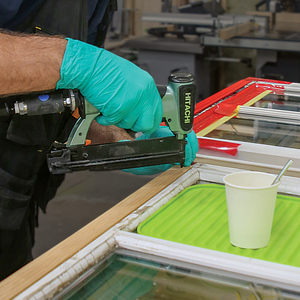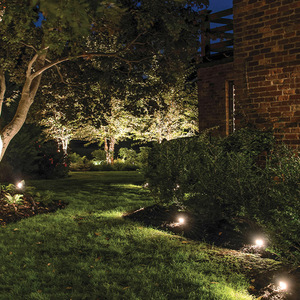Afternoon all,
I would like to replace the interior staircase (between the main and upper floor) in my 1940s 1-1/2 story home, and I’m looking for some guidance/advice/resources on the supporting structure for the winders.
The current staircase is the original housed-stringer stairs, has a 3-step 90° winder at the bottom, and sits above the stairs to the basement. It’s a ‘closed staircase’ with a full-height wall on one side, and a supporting wall encompassing the housed-stringer on the other
The replacement stairs will sit in exactly the same spot and will be carpeted. I’m not really too keen on tackling a housed-stringer replacement, so my intention is a notched stringer style using LVL or similar.
I have a copy of Larry Haun’s FHB article, and have read other Breaktime postings that discuss using stacked pie-shaped boxes for the winders. My concern is the bottom box will encroach on the headroom for the basement stairs below (which is marginal already).
I’m hoping for some ideas about an alternate approach for framing/supporting the winders that would maximize the headroom below, while ideally, still allowing for the underside to be drywalled (without requiring crazy free-form curving drywall).
Many thanks in advance.
Ewan



















Replies
This is more in the way of a BUMP than an answer, 'cause I'm feeling extra old & stupid today....
Coupla questions though. Why are you replacing the existing? By housed stringer do you mean the treads & risers are in dados in the stringers? How was the existing winder (which I would call a turning landing) built so as to not encroach on the basement stair headroom?
Hi jrnbj,
Thanks for the bump.The reason for replacing... the existing staircase squeaks like crazy, has several split treads and risers and the stringer/skirt board has seen 60+ years of abuse/paint/more abuse.Yep, by "housed-stringer" I mean the existing stringers are mortised for the treads and risers.The existing staircase encroaches minimally on the basement stair headroom because there isn't a framed support structure below the treads, as there would be with stacked pie-shaped boxes (where the bottom square box would span across the basement stair opening, perpendicular to the run-direction of the staircase)... does this make sense?Please let me know if I'm talking gibberish.Thanks again,
Ewan
Interesting to see housed stringers in a stair of that age......
It's not that hard to do the mortising....but certainly harder to set the stair in place, as it has to be done as a unit.....
So what's the existing structure framing the landing? why not just duplicate it new?
Could you strip the drywall off the walls beneath the new winder platforms with the intent of replacing it with 3/4" MDO? That MDO would then be what supports the new winder treads? That would save you a few inches beneath each tread that would normally be framing supporting those winder treads.
Maybe use angle iron to support the winder treads instead of wood framing?
Hi Jim,
Thanks for your reply.
The angle iron might work... I'll give that one some thought.I'm not entirely clear on where you're suggesting the MDO would be used... as sub-treads?Thanks again,
Ewan
No, not as sub treads. It would replace the drywall beneath the platform tread.
You could use, say 1" (or thicker) plywood for the winder platform tread which would bear on the top edges of the MDO, which would be applied to the framing beneath the treads like drywall, but cut in such a way that the winder platform treads wouls sit on top of the MDO sheathing.
The MDO would be perpendicular to, and beneath the edges of the platform tread. Kind of the same idea as housed stringers on a straight run of stairs.
Clear as mud, right?
Hi Jim,
Thanks for clearing that up... I've got it now.How would you propose supporting the bottoms of the straight-run stringers for the run of stairs above the winders? I gather using the stacked-box approach, the bottom of the straight-run stringers would simply sit on the top box.If I beefed-up the riser on the top winder, could I hang (i.e. with joist hangers or bird's-mouth-style notches) the bottoms of the straight-run stringers from the riser? It's unclear to me if these stringers are exerted any lateral forces (i.e. in the direction of the run) that need to be resisted, or if the loading is essentially all downward... any thoughts?Thanks again Jim.Ewan
Ewan, I'm thinking that you don't need structural stringers. Run the risers right into the wall framing, and they'll support the treads. Use thick tread stock. I don't see how a stair could be built less obtrusively than that.Andy
"Never try to teach a pig to sing. It wastes your time and annoys the pig." Robert A. Heinlein (or maybe Mark Twain)
"Get off your dead #### and on your dying feet." Mom
"Everything not forbidden is compulsory." T.H. White, The Once and Future King
Thanks Andy for your reply... appreciated.What do you think about using notched stringers for the straight section above the winder, and hanging the bottom of the stringers off the top winder riser using joist hangers or a seat cut... will this work, or will there be too much lateral pressure on the riser?Ewan
You can use 2x stock for the risers, or for that one riser, in which case hanging the upper stringer from the riser should be fine. I'm thinking though that the upper stringer is going to hang below the bottom of that riser, so you're back to the headroom issue. There's no reason you can't build the entire stair without stringers, assuming that it's not unusually wide. Just lay it out on the walls, and add blocking and studs where needed. That would maximize the headroom below.
Andy
"Never try to teach a pig to sing. It wastes your time and annoys the pig." Robert A. Heinlein (or maybe Mark Twain)
"Get off your dead #### and on your dying feet." Mom
"Everything not forbidden is compulsory." T.H. White, The Once and Future King
Yeah, if you want to use notched stringers for the straight run above the winders, you could install a header as (or directly behind) the first riser, then attach your stringers to that. That's easy enough to do with framing hardware.
Lots of ways to skin the perverbial cat. Main thing is to have a consistant rise throughout the staircase and that you have enough tread depth along the line of travel through the winder section.
The codes are pretty specific how much tread at what distance from the inside edge. It's clearly defined in the IRC book. If you don't own one I highly suggest you invest in the one with commentary - it explains in layman's terms the rational behind each paragraph in the code - I find it very helpful. I'd be surprised if you didn't think the 45 bones (or whatever it costs nowdays) was a worthwhile investment.
Thanks to everybody for the feedback so far... much appreciated.I've attached a couple of photos below of the existing staircase... it's in an embarrassing state, hence the drive to replace it. Jim,
Given this is a retrofit and I don't have the luxury of increasing the area for the staircase, I'm going to be stuck with, what I'm pretty certain are non-IRC compliant stairs. I do have some references with Canadian building code details, but I'll maybe look into picking-up a copy of the IRC book as well.Thanks again,
Ewan
Edited 6/22/2008 4:41 pm ET by Ewan
Hey Jim, that's a very interesting concept... but what about the 1 1/2" bearing thing... are you talking about using the angle iron there? You are so devious<G> Now you see this one-eyed midget
Shouting the word "NOW"
And you say, "For what reason?"
And he says, "How?"
And you say, "What does this mean?"
And he screams back, "You're a cow
Give me some milk
Or else go home"
Well, I was thinking about angle iron as a different approach to the MDO, but you certainly COULD do both.
Are you saying 1+1/2" of direct bearing is required? Didn't know that, if it's true. You could double the MDO. Or even just put MDO directly over the existing drywall and let the treads cantaliever past the MDO, past the drywall and into the framed wall.
Helll, you could strip the walls and add blocking between studs to bear the treads/platforms on if you wanted to. You could do that the entire staircase if headroom below was the first priority.
Our framing needs to bear 1 1/2", but now I'm thinking stairs are different, especially since a housed stringer is around 1/2" deep.I think Andy's notion to run the risers into the framing may be a good way in this case.Ewen, I have angled the framing under stairs to give more room below.Don't know if you have to follow a code, but here, NC, winders have to be at least 4" at the narrowest point of foot travel. Other places are 6".You could probably get it by moving the 2nd winder's riser forward at the narrow point. Now you see this one-eyed midget
Shouting the word "NOW"
And you say, "For what reason?"
And he says, "How?"
And you say, "What does this mean?"
And he screams back, "You're a cow
Give me some milk
Or else go home"
If maximizing headroom under the stairs is key, it sometimes can be worthwhile in critical areas to treat the risers as headers which attach to solid framing on each side of the stair well. The ends of each riser (or actually a sub riser) can extend into the wall framing and be supported appropriately. To stair builders this can seem very strange, but no other way will give as much headroom--this is a trick picked up in an article from Tom Silva (this old house).
In your situation I'd simply determine where each riser should be and run an appropriately sized 2x from wall frame to wall frame (plus bearing on each side). The challenging part might seem how to attach the tread securely to the riser (since there is no support from the underside). Simpson straps can be run down the back of the riser/header and wrapped under the tread. Then a decent sized screw goes through the strap, through the tread and into the header. Very solid. I'm a fan of using 1-1/8" ply subtreads rather than solid wood for attachment to the riser/header.
If the winders are quite wide from wall to wall I wouldn't hesitate to use something stiffer than 2x framing material. This would be a perfect place for ripped down lvl or 2x hardwood to keep things stiff.
Beer was created so carpenters wouldn't rule the world.
An "existing" picture would really help in this case.